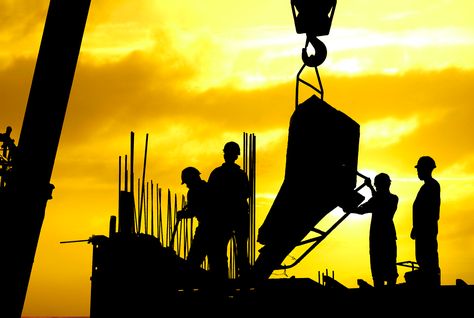On site
The term ‘on site’ (or on-site) typically refers to work which is carried out on the construction site itself. This is as opposed to ‘off-site’ which is generally associated with prefabrication or pre-assembly techniques. For more information see: Offsite construction.
Generally, on-site construction techniques tend to be more labour and time intensive, and they may have lower quality due to the complexities of working in an uncontrolled environment, subject to weather and other changeable conditions, space and access restrictions and so on. However, they can be more flexible in response to changes that may arise on site.
See also: In situ.
Workers on a project may be described as ‘on site’ or ‘off site’.
On site may also refer to the storage of materials. This is as opposed to off site materials, where the client has paid for materials, but they have yet to be delivered to site. The client may do this to ‘reserve’ the items, protecting the programme, but this does put the client at risk, for example if the contractor becomes insolvent and the items are then not delivered, even though payment has been made. For more information see: Off site materials.
On site may also refer to the generation of heat and / or power. Localised, point generation of heat and power provides an independent, responsive, sustainable method of supply. On-site generation can include renewable energy technologies, such as photovoltaics, anaerobic digestion, wind turbines, water turbines, combined heat and power (CHP) and so on. For more information see: On site generation of heat and power.
The feed-in tariff scheme allows consumers who generate their own electricity from a renewable or low-carbon source to qualify for a payment for each unit of electricity generated. Consumers can also qualify for an ‘export tariff’ by selling surplus electricity back to their supplier. For more information see: Feed-in tariff.
The renewable heat incentive (RHI) is similar to the feed in tariff scheme, but is designed to incentivise heat generation. For more information see: Renewable heat incentive.
[edit] Related articles on Designing Buildings Wiki
Featured articles and news
Infrastructure that connect the physical and digital domains.
Harnessing robotics and AI in challenging environments
The key to nuclear decommissioning and fusion engineering.
BSRIA announces Lisa Ashworth as new CEO
Tasked with furthering BSRIA’s impressive growth ambitions.
Public buildings get half a million energy efficiency boost
£557 million to switch to cleaner heating and save on energy.
CIOB launches pre-election manifesto
Outlining potential future policies for the next government.
Grenfell Tower Inquiry announcement
Phase 2 hearings come to a close and the final report due in September.
Progress from Parts L, F and O: A whitepaper, one year on.
A replicated study to understand the opinion of practitioners.
ECA announces new president 2024
Electrical engineer and business leader Stuart Smith.
A distinct type of countryside that should be celebrated.
Should Part O be extended to existing buildings?
EAC brands heatwave adaptation a missed opportunity.
Definition of Statutory in workplace and facilities management
Established by IWFM, BESA, CIBSE and BSRIA.
Tackling the transition from traditional heating systems
59% lack the necessary information and confidence to switch.
The general election and the construction industry
As PM, Rishi Sunak announces July 4 date for an election.
Eco apprenticeships continue help grow green workforce
A year after being recognised at the King's coronation.
Permitted development rights for agricultural buildings
The changes coming into effect as of May 21, 2024.






















